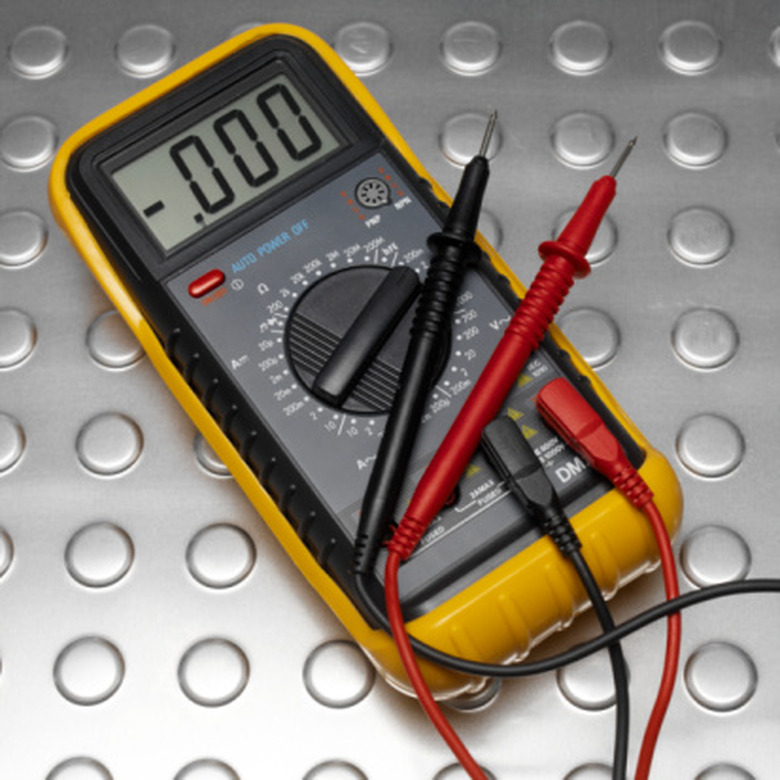How To Measure VDC
Measuring volts DC (VDC) is a basic and simple task required in working with electronic circuits. Voltage is the force that causes electrons to move as current through a circuit. It is important to know how to measure the voltage at points throughout a circuit so as to be able to troubleshoot malfunctioning circuits and locate damaged electronic components. Measuring voltage DC is done with a digital multimeter. The simplest example of measuring volts DC is to measure the voltage in a battery.
Step 1
Connect the black wire probe to the COM jack of a digital multimeter.
Step 2
Connect the red wire probe to the volt-ohm-milliampere jack of the digital multimeter.
Step 3
Turn the digital multimeter selector knob to the 20-volt position. Typical multimeters have selective voltage settings at 200 millivolts, 2 volts, 20 volts, 200 volts and 600 volts. If you select a voltage setting that is too low, the meter will typically display the digit 1. If you select a voltage setting that is too high, the meter will typically display a single whole number value, but no decimal values.
Step 4
Attach the probe end of the black lead to the negative (-) terminal of a 9-volt battery.
Step 5
Attach the probe end of the red lead to the positive (+) terminal of the 9-volt battery.
Step 6
Read the value on the digital multimeter display. The value should be slightly less than 9 volts. A typical new 9-volt battery will measure anywhere between 7.2 to 9 volts. The value measured is not an indicator of the life cycle of the battery. The value only indicates how much voltage the battery is capable of delivering. Modern batteries typically deliver full voltage or near-full voltage until completely depleted.
Things Needed
- Digital multimeter
- Black and red multimeter leads
- 9-volt battery
TL;DR (Too Long; Didn't Read)
If the multimeter display shows a negative number, then you have the leads reversed. Switch the lead positions on the terminals of the battery to get a positive value.
To measure voltage within a circuit, simply place the two leads parallel to the circuit path or one lead on each side of a component.
Warning
Do not attempt to measure voltage by placing the meter leads in series with the circuit. While this is the correct way to measure current, it is the wrong way to measure voltage and could damage your digital multimeter.
References
- "Circuit Building For Dummies"; H. Ward Silver; 2008
- "Teach Yourself Electricity And Electronics"; Stan Gibilisco; 1997
Cite This Article
MLA
Boyer, Timothy. "How To Measure VDC" sciencing.com, https://www.sciencing.com/measure-vdc-8716979/. 24 April 2017.
APA
Boyer, Timothy. (2017, April 24). How To Measure VDC. sciencing.com. Retrieved from https://www.sciencing.com/measure-vdc-8716979/
Chicago
Boyer, Timothy. How To Measure VDC last modified March 24, 2022. https://www.sciencing.com/measure-vdc-8716979/
